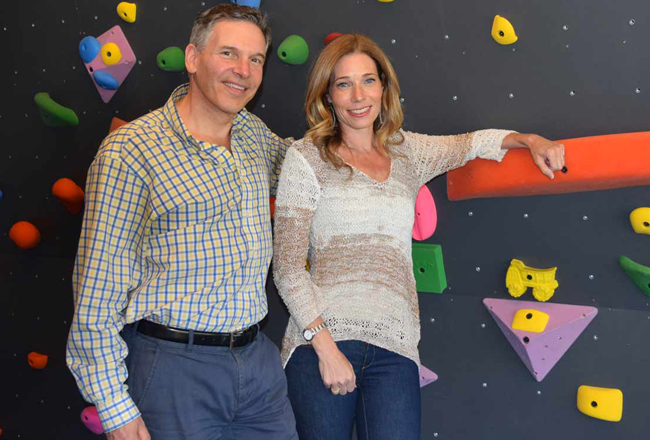
Developmental disorders among the nation”™s youth have been on the rise, with research pointing to more than one in 20 children and teens impacted by anxiety or depression, more than 10% of children diagnosed with Attention Deficit Hyperactivity Disorder (ADHD), between 5% and 16% of children showing symptoms of sensory-processing disorder and an estimated one of 59 children diagnosed with autism.
Within Fairfield County, two facilities have taken different approaches to working with youth with developmental disorders. The Southfield Center for Development in Darien focused on offering an integrated approach to learning, emotional, communication and behavioral issues. In Stamford, Sensory Kids spotlighted multisensory and pediatric occupational therapy.
In January, the two organizations collaborated to create a new entity called SFSK. Based in Wilton, SFSK offers a multidisciplinary approach that combines the services of The Southfield Center and Sensory Kids in a single setting. Christopher Bogart, executive director of The Southfield Center, believed the integration of the two organizations will prove beneficial to the young people being served.
“Treatment for children is rarely handled in a way where one person has all the answers to solve,” he explained. “Kids are much more complicated. The most effective way to do that is in a way that gives them opportunities for development, and you very often need to bring together a team of professionals. So many practices are set up as solo vendors, so to speak.”
“We have seven different disciplines and 55 professionals work across the settings,” said Melissa Kahn, executive director and owner of Sensory Kids.
There is no one-size-fits-all treatment for developmental disorders and SFSK has scaled its work to accommodate different approaches to therapy.
“We have intentionally designed the space so you can do one-on-one sessions, or combine the two one-on-one sessions or do group sessions,” Kahn continued, adding that she did not prefer the solo-focus approach. “No one lives in a one-on-one world, so the whole idea of therapy ”¦ is to have the kids function actively in their environment, whether it is at school or at home ”” and, as they are getting older, in jobs and in their careers. So, it wouldn”™t make sense to do one-on-one because it is not going to be realistic about what they are going to be doing in life.”
One key element of the new SFSK space is a re-creation of the brightly hued gym from Sensory Kids”™ Stamford facility. While the gym provides exercise for its young users, it also works to sharpen their abilities to process a shifting world.
“What we did from a sensory perspective is to create a place where every single aspect of the gym has a therapeutic use behind it,” she explained. “Whether it is a foam pit or a tunnel through the air, there is a reason it was designed like that. And how are they getting into that? Is it very obvious or do they have to problem-solve and motor-plan their way to do that? There is a reason the surfaces change slightly, so they have to use their movement system differently.”
SFSK is run as a private organization, but Kahn noted that the new facility and its predecessor entities maintain a strong relationship with local schools. “We”™ve worked cooperatively with schools where I feel we can come together as an advocate for the child,” she said.
Bogart noted that school systems were never designed to focus primarily on developmental disorders.
“I think they are doing as good of a job that they can do with the resources and facilities they have,” he said. “There are limitations in terms of their budgets and the professional development of their teachers. I think they do a terrific job with many of the kids, but there are kids that have such specialized needs that you need a higher level of training or a facility that was specifically designed with these kids in mind.”
Bogart observed that “diagnostic tools have gotten better” and teachers and pediatricians are able to identify problems more quickly. Nonetheless, Bogart believed the omnipresence of digital lifestyles is making a bad situation worse.
“There is also a lot of research suggesting the movement of our society to a huge reliance on technology and the rapid amount of change that has happened over the last 25 years has resulted in kids now needing so much more stimuli,” he said. “They are developing more rapidly that they have to start reading at a younger age, which is putting a lot of pressure on kids to develop more quickly than evolution programmed them for.”
They don”™t see a need to franchise their concept into other towns.
“Is there a real need for that countywide or even beyond?” said Bogart. “One of the things we”™ve talked about is rather than setting up another SFSK, we could reach a broader range of people by training people based on the model that we built.”




















